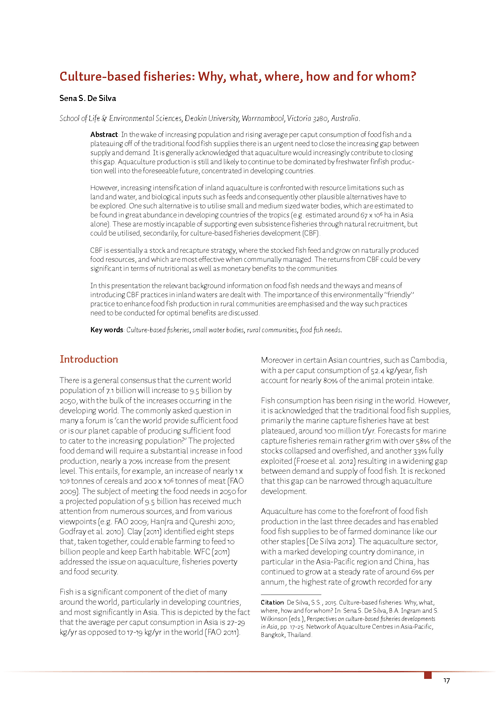Culture-based fisheries: Why, what, where, how and for whom?
12 May 2015 | Sena De Silva | 1210 Downloads | .pdf | 179.26 KB | Culture-based fisheries
In the wake of increasing population and rising average per caput consumption of food fish and a plateauing off of the traditional food fish supplies there is an urgent need to close the increasing gap between supply and demand. It is generally acknowledged that aquaculture would increasingly contribute to closing this gap. Aquaculture production is still and likely to continue to be dominated by freshwater finfish production well into the foreseeable future, concentrated in developing countries.
However, increasing intensification of inland aquaculture is confronted with resource limitations such as land and water, and biological inputs such as feeds and consequently other plausible alternatives have to be explored. One such alternative is to utilise small and medium sized water bodies, which are estimated to be found in great abundance in developing countries of the tropics (e.g. estimated around 67 x 106 ha in Asia alone). These are mostly incapable of supporting even subsistence fisheries through natural recruitment, but could be utilised, secondarily, for culture-based fisheries development (CBF).
CBF is essentially a stock and recapture strategy, where the stocked fish feed and grow on naturally produced food resources, and which are most effective when communally managed. The returns from CBF could be very significant in terms of nutritional as well as monetary benefits to the communities.
In this presentation the relevant background information on food fish needs and the ways and means of introducing CBF practices in inland waters are dealt with. The importance of this environmentally “friendly” practice to enhance food fish production in rural communities are emphasised and the way such practices need to be conducted for optimal benefits are discussed.
Creative Commons Attribution.

